Prediction of Damage to the Vehicle Underbody due to Stone Chipping
Abstract
:1. Introduction
2. Definition and Prediction of Stone Chipping
2.1. Tire Geometry and Numerical Model
2.2. Numerical Definition of Stone Chipping Based on Vehicle Geometry
2.3. Matrix Definitions for Numerical Simulation
3. Results
Numerical Simulation for Impact Prediction with the Kinetic Energy
4. Conclusions
Author Contributions
Fundings
Conflicts of Interest
References
- Larsson, F.; Andersson, P.; Mellander, B.-E. Lithium-ion battery aspects on fires in electrified vehicles on the basis of experimental abuse tests. Batteries 2016, 2, 9. [Google Scholar] [CrossRef]
- Chu, Y.-J.; Shin, Y.-S.; Lee, S.-Y. Aerodynamic analysis and noise-reducing design of an outside rear view mirror. Appl. Sci. 2018, 8, 519. [Google Scholar] [CrossRef]
- Lin, C.S.; Lee, H.B.; Hsieh, S.H. Microstructure and formability of ZnNi alloy electrodeposited sheet steel. Metall. Mater. Trans. A 2000, 31, 475–485. [Google Scholar] [CrossRef]
- Vadori, R. On the Simulation of the Effects of the “Stone Chipping” on the Car Underbody—An Application of Monte Carlo Methods; SAE Technical Paper, 2010-01-0731; Society of Automotive Engineers: Warrendale, PA, USA, 2010. [Google Scholar]
- Razin, A.A.; Ramezamzadeh, B.; Yari, H. Detecting and estimating the extent of automotive coating delamination and damage indexes after stone chipping using electrochemical impedance spectroscopy. Prog. Org. Coat. 2016, 92, 95–109. [Google Scholar] [CrossRef]
- Youn, J.Y.; Kim, S.H.; Jin, Y.S. A study on the impact resistance of plastic underbody parts. SAE Int. J. Mater. Manf. 2016, 9, 776–780. [Google Scholar] [CrossRef]
- Shang, R.; Altenhof, W.; Hu, H. Kinetic Energy Compensation of Tire Absence in Numerical Modeling of Wheel Impact Testing; SAE Technical Paper, 2005-01-1825; Society of Automotive Engineers: Warrendale, PA, USA, 2005. [Google Scholar]
- Charles, J.R. The Design and Processing of Cast Aluminum Wheels for Impact Performance; SAE Technical Paper, 2001-01-0749; Society of Automotive Engineers: Warrendale, PA, USA, 2001. [Google Scholar]
- Shiuh, C.H.; Yu, C.L. The finite element analysis of composite laminates and shell structures subjected to low velocity impact. Compos. Struct. 2004, 66, 277–285. [Google Scholar] [CrossRef]
- Botev, Z.I.; Grotowski, F.I.; Kroese, D.P. Kernel density estimation via diffusion. Ann. Statist. 2010, 38, 2916–2957. [Google Scholar] [CrossRef] [Green Version]
- Ben, A.Y.; Levy, A. Absorbed shear energy during solid particle impact on ductile surface. WEAR 2016, 368, 162–172. [Google Scholar] [CrossRef]
- Gim, G.; Nikravesh, P.E. An analytical model of pneumatic tires for vehicle dynamic simulations. Part 1: Pure slips. Int. J. Vehicle Des. 1990, 11, 589–618. [Google Scholar] [CrossRef]
- Gillespie, T. Fundamentals of Vehicle Dynamics, 1st ed.; Society of Automotive Engineers Inc.: Warrendale, PA, USA, 1992; pp. 304–321. ISBN 978-1-56091-199-9. [Google Scholar]
- Bendat, J.; Piersol, A. Random Data: Analysis and Measurement Procedures, 4th ed.; John Wiley & Sons: Hoboken, NJ, USA, 2011; p. 594. ISBN 978-0-470-24877-5. [Google Scholar]
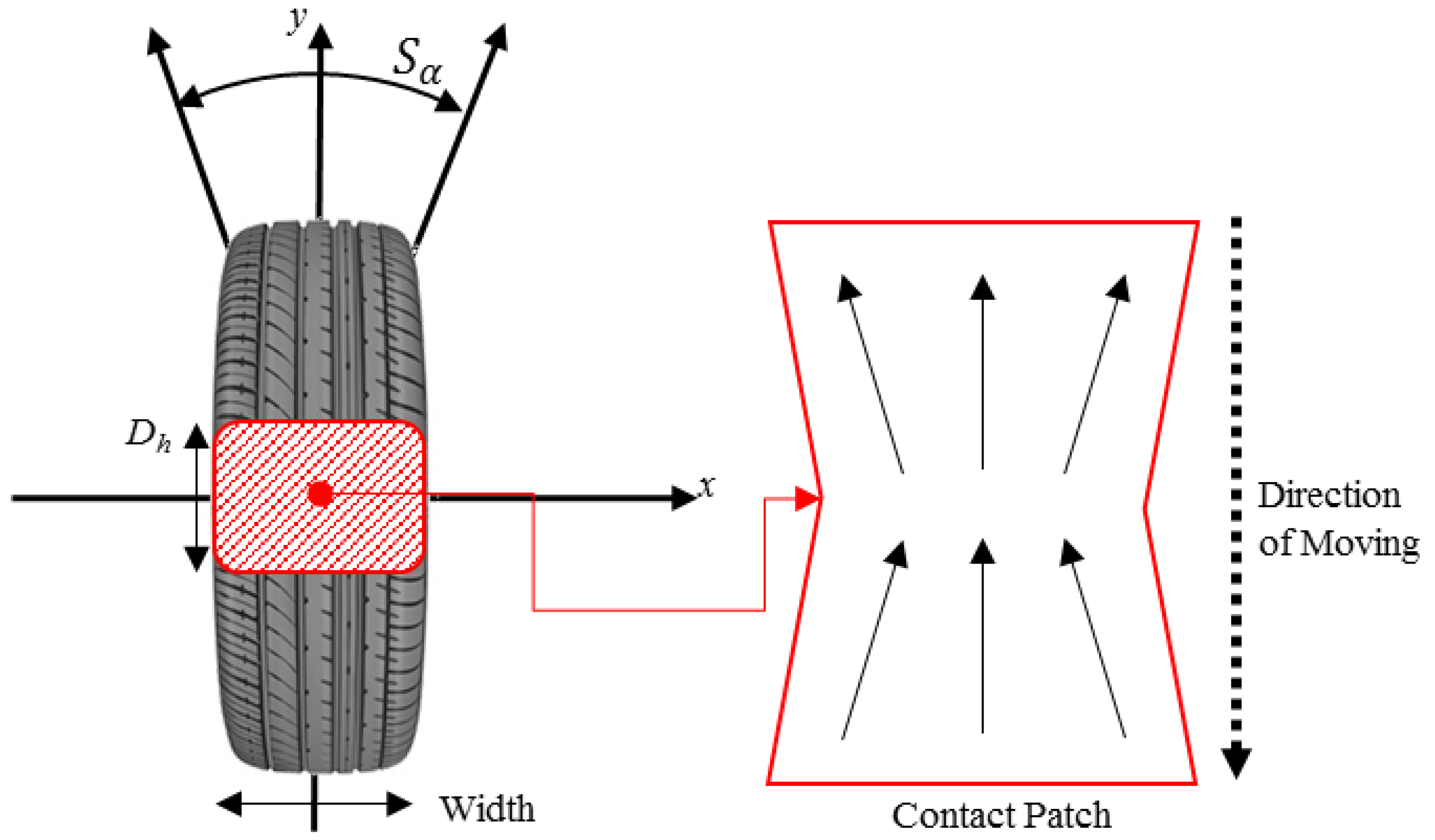
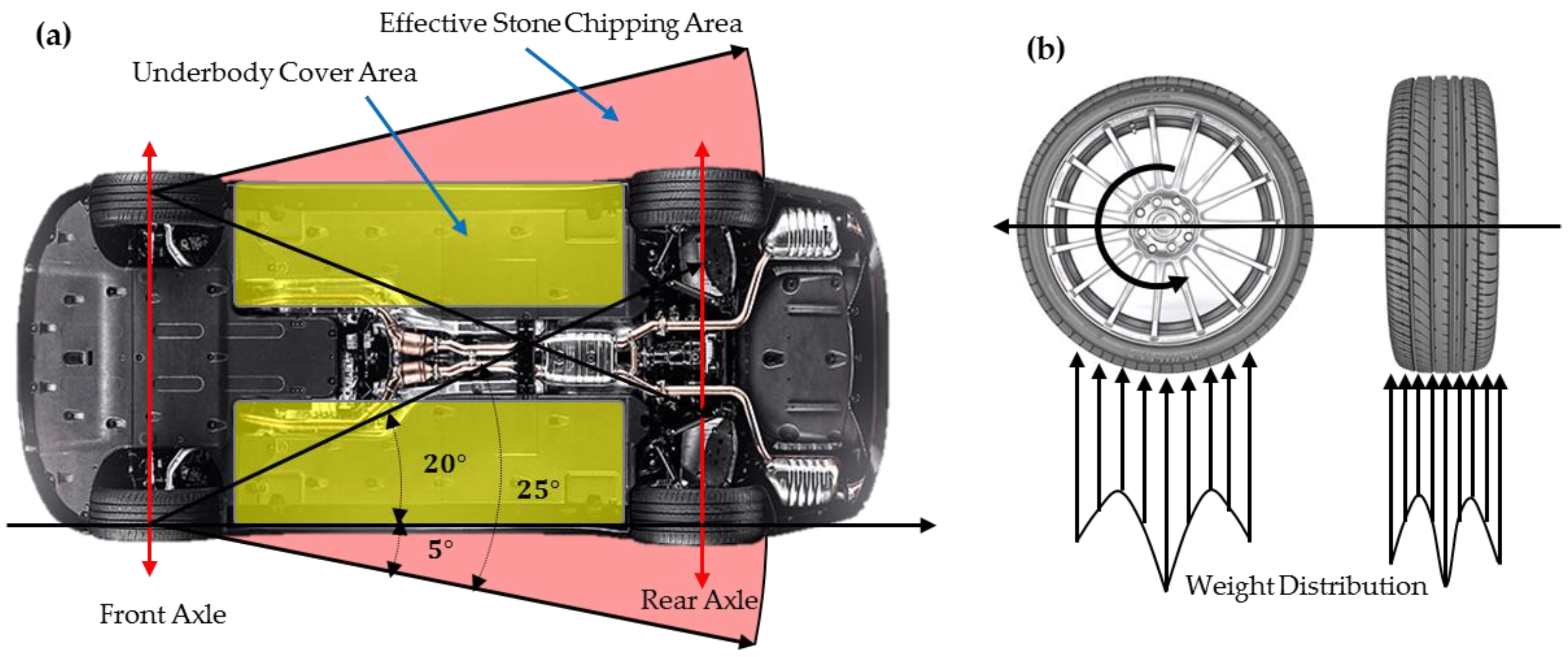
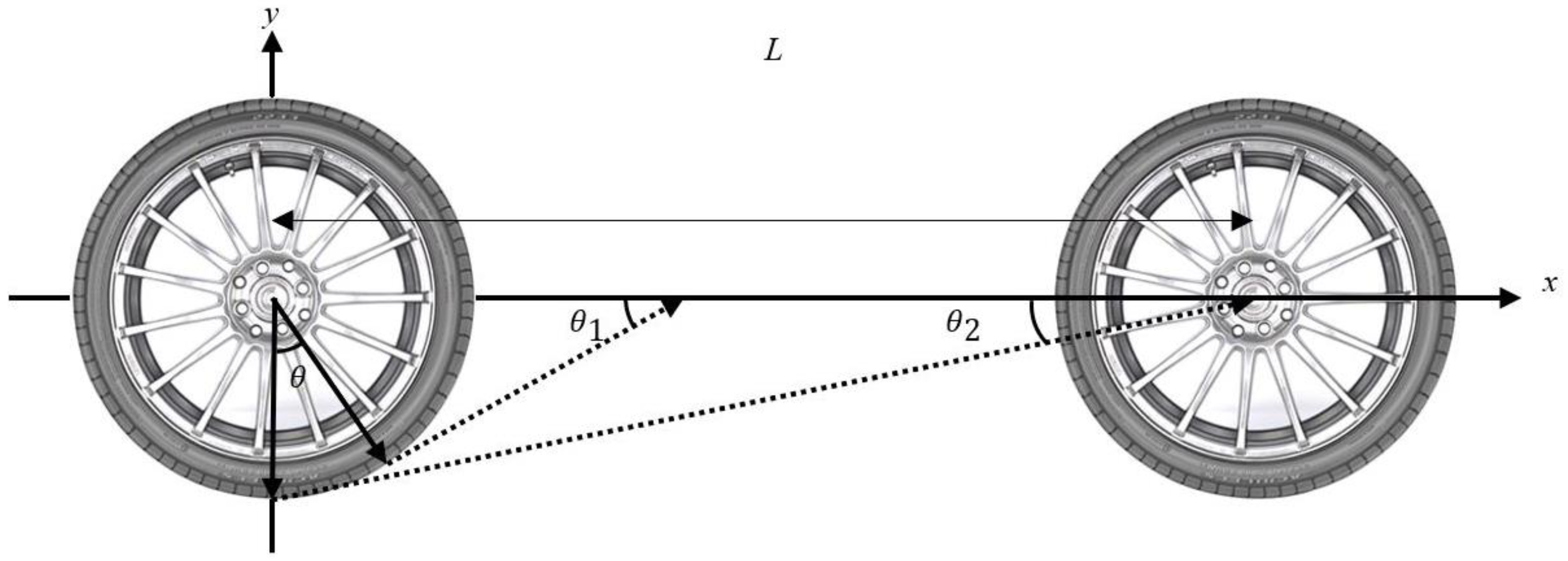
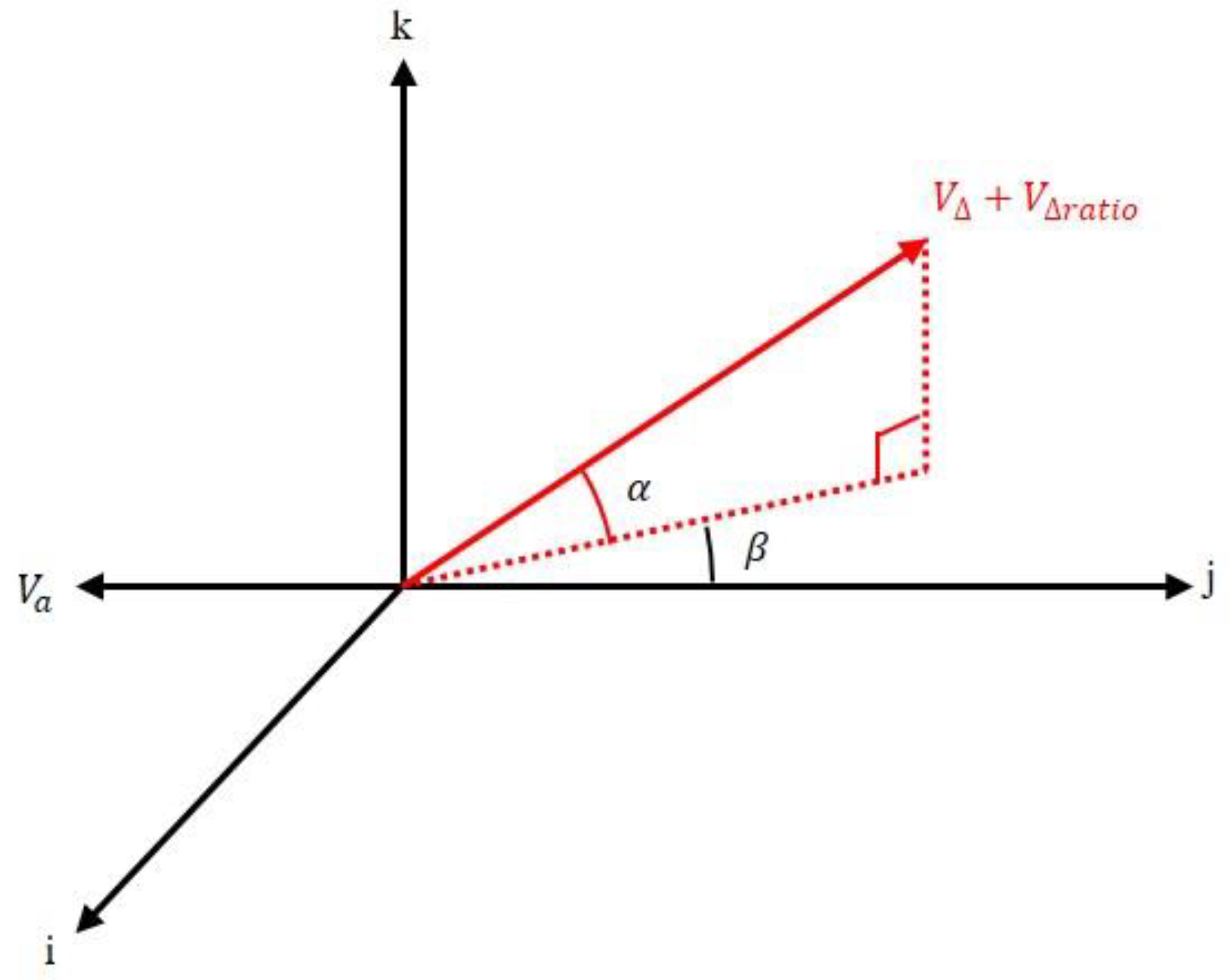
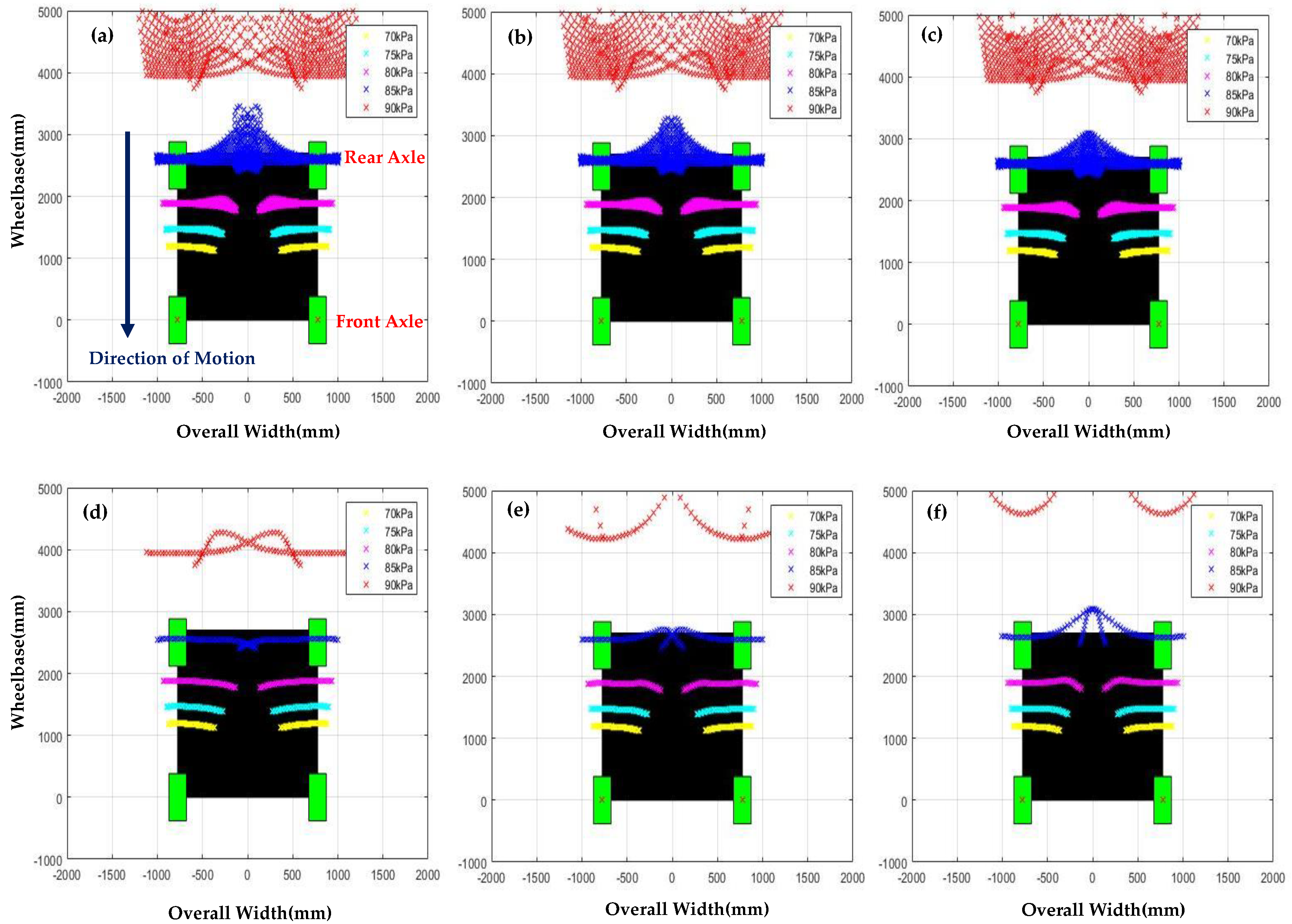
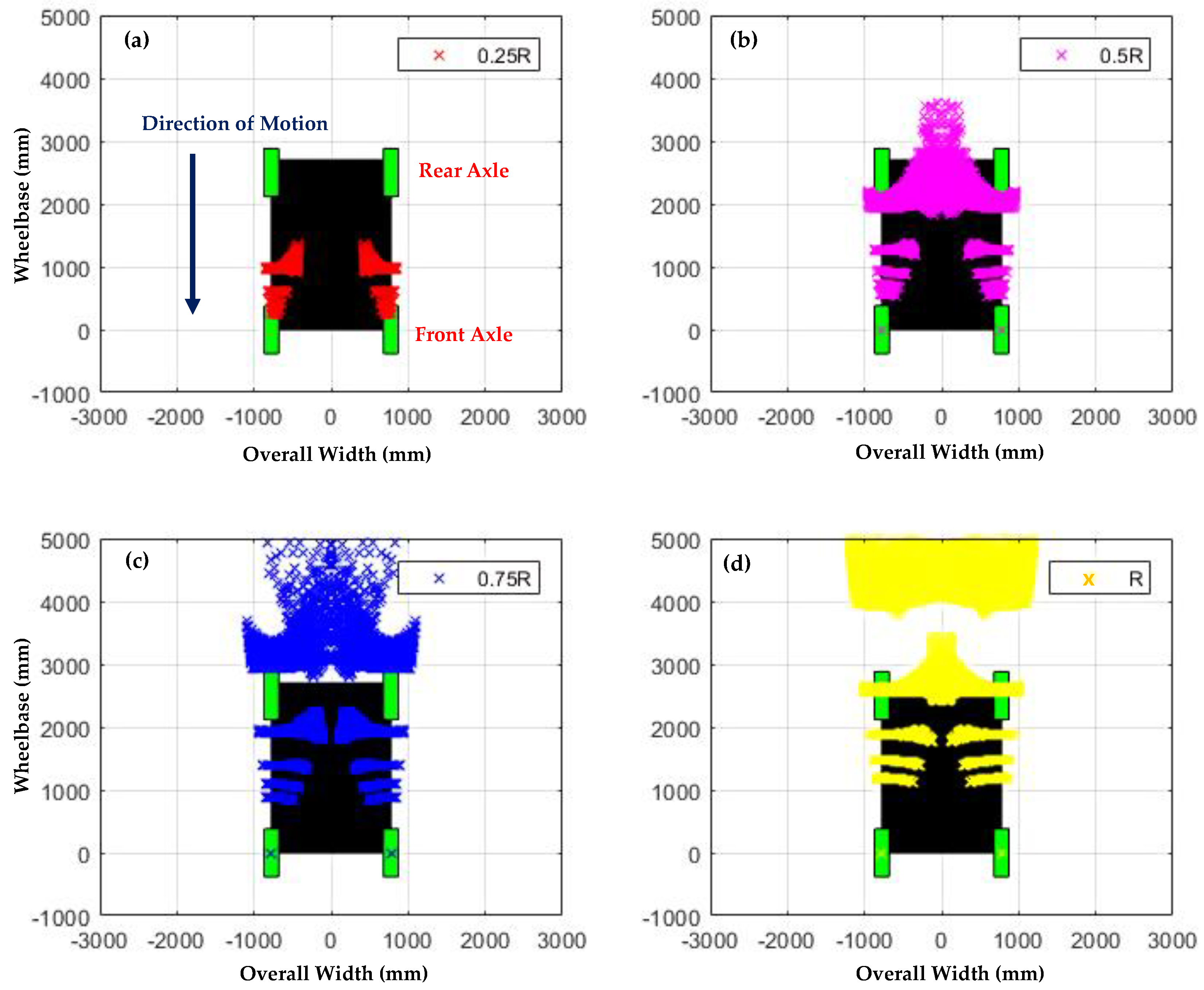
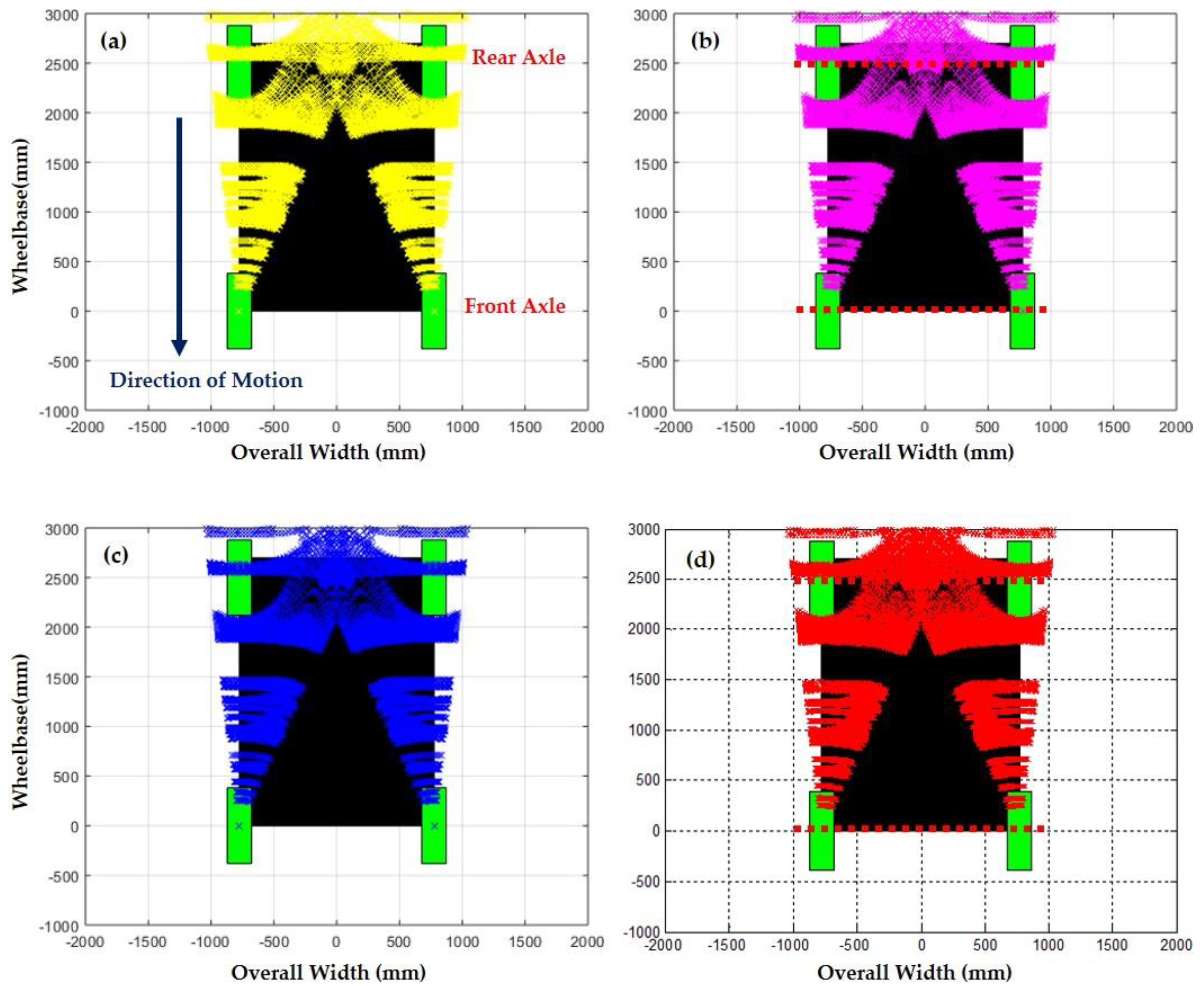
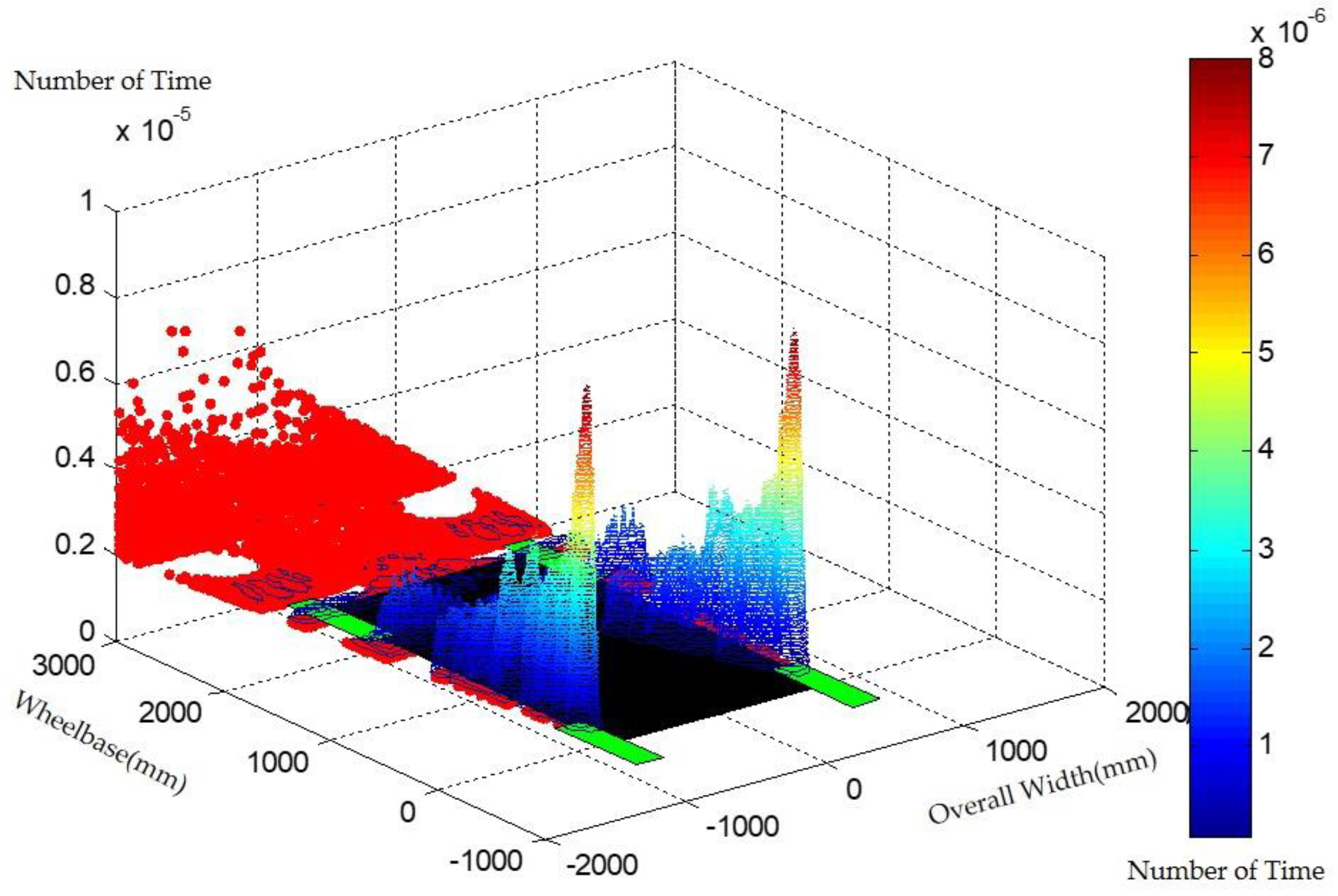
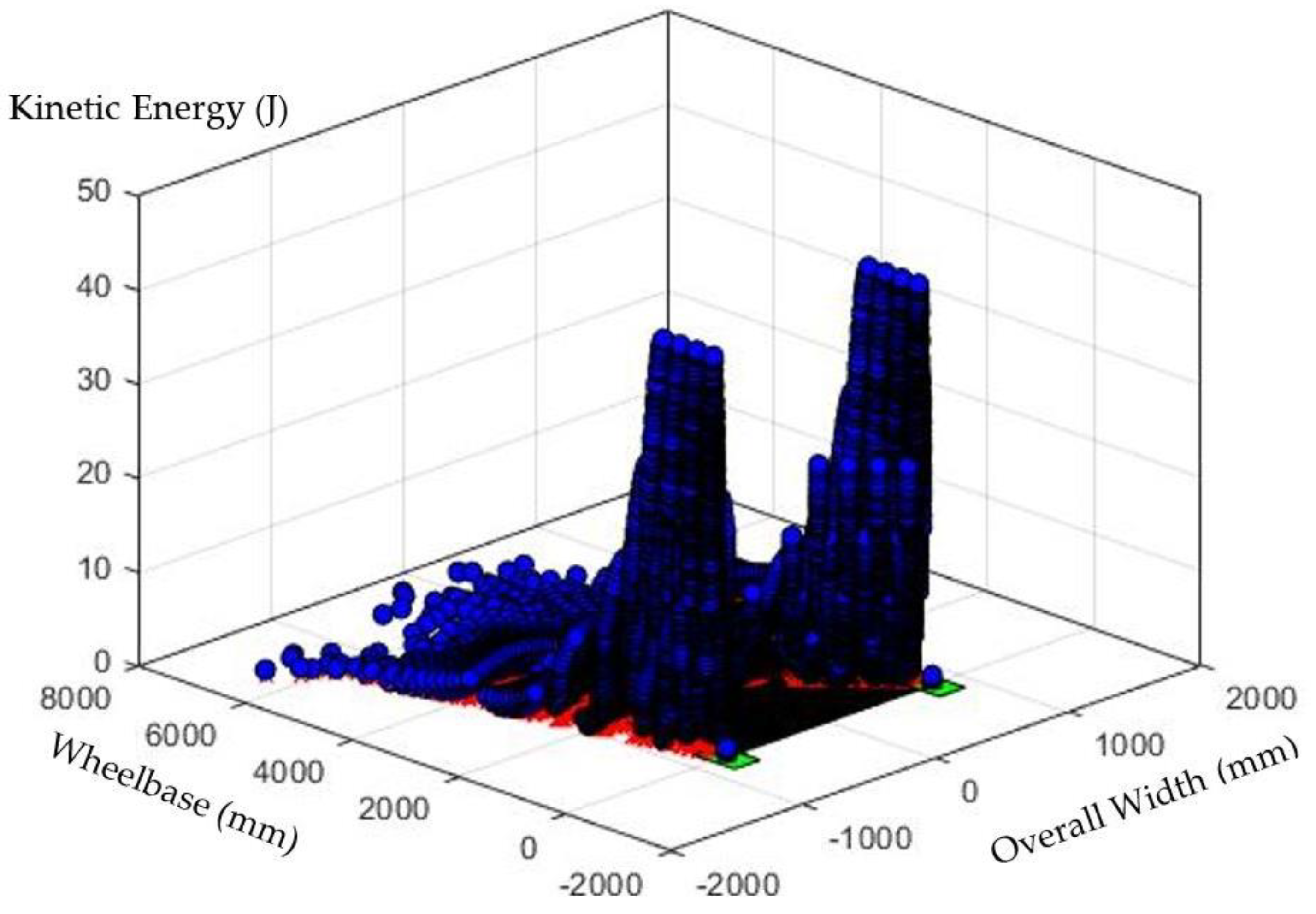
| Code Angle of the Tire Belt (°) | −20 | −10 | 0 | 10 | 20 |
|---|---|---|---|---|---|
| Weight Distribution (kPa) | 6 | 4 | 8 | 4 | 6 |
| Weight Distribution Ratio | 0.75 | 0.5 | 1 | 0.5 | 0.75 |
| Tire Pressure (%) | 70 | 75 | 80 | 85 | 90 |
|---|---|---|---|---|---|
| Height (Dh, cm) | 22.31 | 18.59 | 14.88 | 11.16 | 7.44 |
| Tangential Angle (α, rad) | 0.2972 | 0.2465 | 0.1965 | 0.1469 | 0.0978 |
| Critical Zone (mm) | 0–500 | 500–1000 | 1000–1500 | 1500–2000 | |
|---|---|---|---|---|---|
| Number of Stones | 60 kph | 2272 | 7480 | 88 | 0 |
| 80 kph | 2297 | 7491 | 86 | 1 | |
| 110 kph | 2343 | 7515 | 85 | 0 | |
| Total | 6912 | 22,486 | 259 | 1 | |
| Collision Probability (%) | 22.588 | 73.484 | 0.846 | 0.003 | |
| Total Kinetic Energy (J) | 14,423 | 217,730 | 315 | 0.54 | |
© 2018 by the authors. Licensee MDPI, Basel, Switzerland. This article is an open access article distributed under the terms and conditions of the Creative Commons Attribution (CC BY) license (http://creativecommons.org/licenses/by/4.0/).
Share and Cite
Chu, Y.-J.; Eun, H.-J.; Lee, S.-Y. Prediction of Damage to the Vehicle Underbody due to Stone Chipping. Appl. Sci. 2018, 8, 1805. https://doi.org/10.3390/app8101805
Chu Y-J, Eun H-J, Lee S-Y. Prediction of Damage to the Vehicle Underbody due to Stone Chipping. Applied Sciences. 2018; 8(10):1805. https://doi.org/10.3390/app8101805
Chicago/Turabian StyleChu, Yong-Ju, Hyo-Jun Eun, and Seung-Yop Lee. 2018. "Prediction of Damage to the Vehicle Underbody due to Stone Chipping" Applied Sciences 8, no. 10: 1805. https://doi.org/10.3390/app8101805




